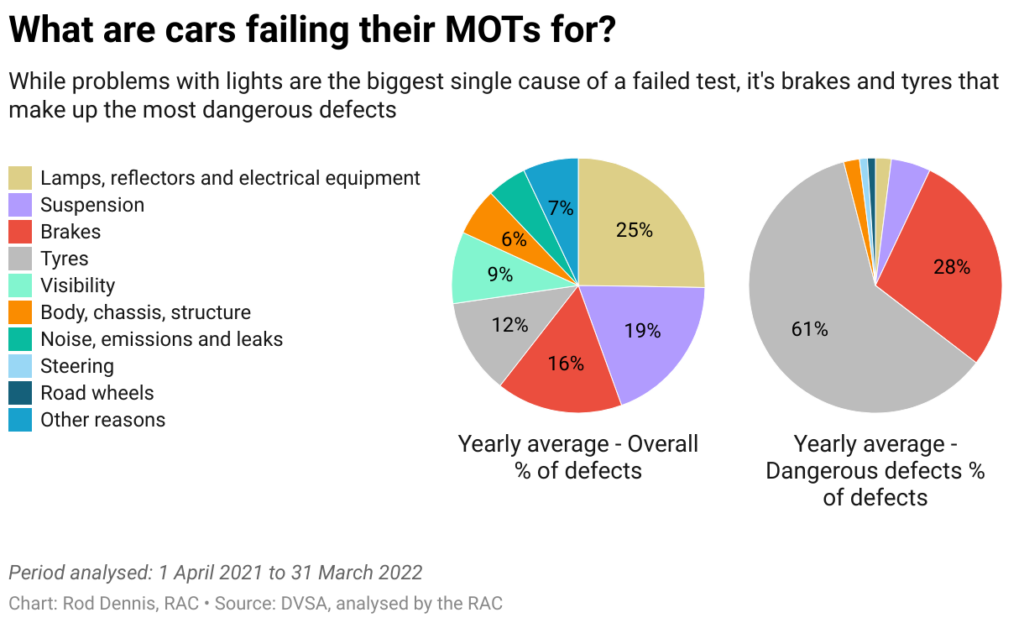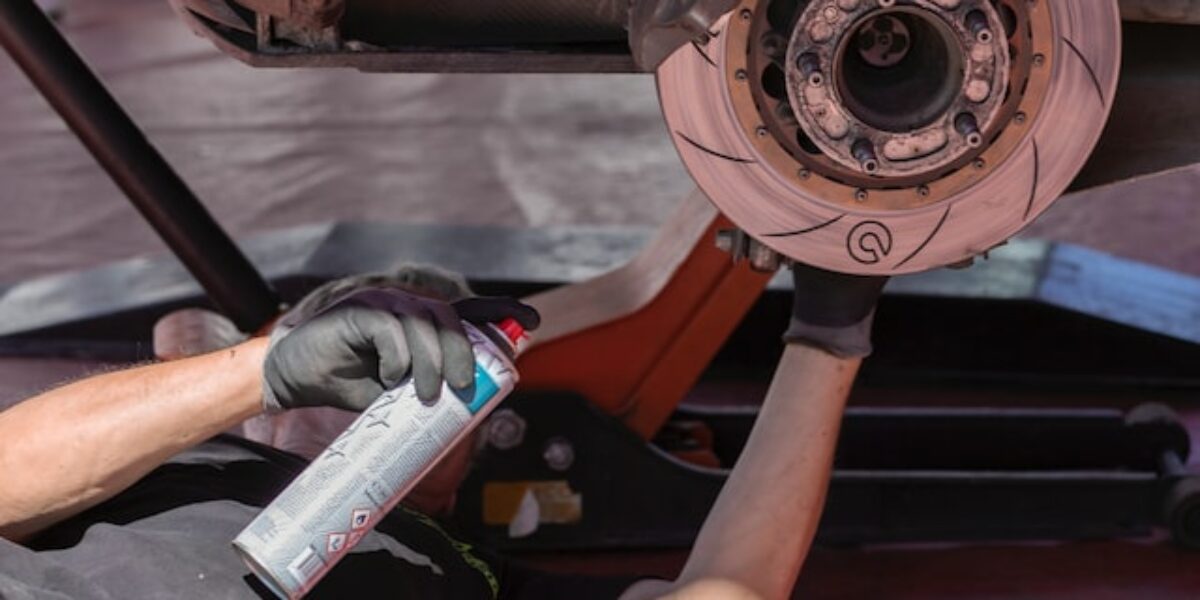Worrying level of MoT failures
Brake and tyre defects represent high failure rates
Problems with brakes and tyres are the most common serious faults recorded for MoT failures.
Meanwhile, lamps, reflectors and indicators continue to be the most frequent reasons for problems with vehicles undergoing the annual safety test.
The RAC has been analysing the latest data from the DVLA.
Warning signs
Failures for non-working headlights, indicators and reflectors accounted for just over a quarter (25.5%) of all MOT failures in the 12 months to March 2022.
Faulty or broken suspensions represented just under a fifth (19.4%) of all failures. But it is problems with brakes (16.4%) and tyres (12%) that raise the biggest road safety concerns. They cam in third and fourth, with bad visibility – likely cracks on windscreens – rounding up the top five, representing 8.7% of the failures.
A third of all initial MOT tests of cars, vans and small passenger vehicles – the equivalent to 7.3m vehicles – resulted in a fail. Nearly one-in-10 tests – 8%, equivalent to 2.4m vehicles – worryingly result in a fail where at least one dangerous defect.
In the most serious cases that prevent a vehicle being driven, brakes and tyres represent 88% of all such failures. This emphasises just how critical it is for drivers to carry out routine checks on these items.
Although the biggest causes of MOT failures have remained consistent over many years, the proportion of tyre failures has increased slightly from 10% in 2018-19 to 12% in 2021-22.

The fear
“Many drivers dread taking their vehicle for its annual MoT for fear they could end up having to spend lots of money on repairs in order to get it to pass. This is no doubt the case for an unlucky third of owners whose vehicles fail their MoTs initially.
“Drivers should never ignore dashboard warning lights as they could end up putting themselves or others at risk,” says RAC head of roads policy Nicholas Lyes. This, continues Lyes, is “costing themselves a lot of money with a bigger repair bill than necessary had they acted straightaway”.
He also recommends “routine servicing” as this often prevent MoT failures.
Another hit from the 60s
Having been in place across the UK since 1960, the scope of the MoT has been expanded over the years. It now includes additional checks, such as vehicle emissions. In 2021-22, emissions failures represented 5% of all failures when combined with noise and leak faults.
In May 2018 there was a move away from a simple pass or fail with advisories to a new five-category system. Failures were split into two classes: major and dangerous, while three pass categories were introduced: pass; pass with minor defects; and a pass with advisories.
Last year, the UK Government was reported to be considering switching the MoT from annually to every two years. This move was described by over half of drivers (55%) to be a bad idea. That was the result of data gathered by the RAC Opinion Panel.
Nicholas Lyes added: “With more than 7.3m small passenger vehicles initially failing their MoTs, and alarmingly around 2.4m of these failures having at least one dangerous defect, the idea of relaxing rules on MoT tests could very well result in making our roads far more dangerous with the number of unroadworthy vehicles increasing. We hope the Government has finally consigned such an idea to the bin.”






